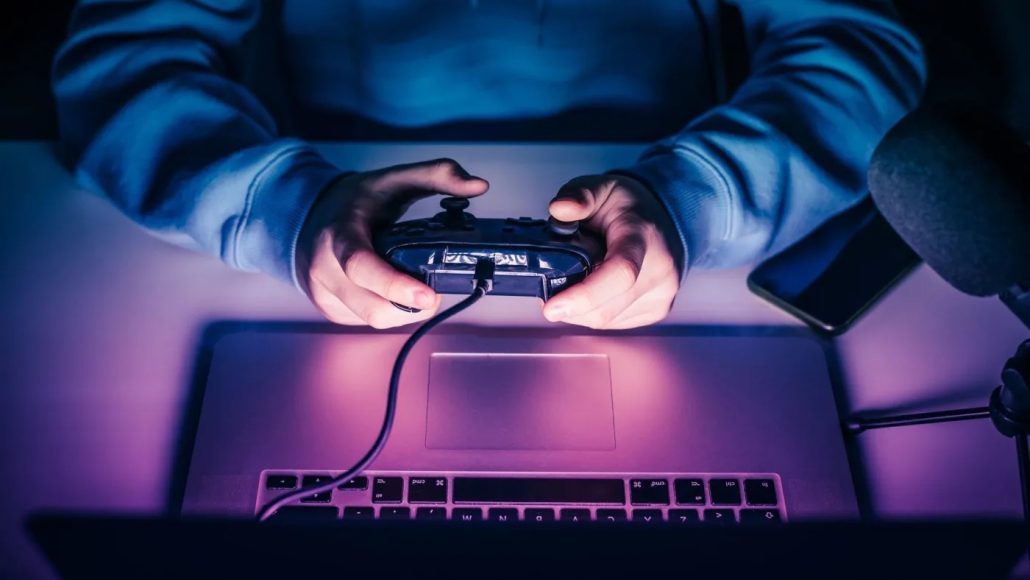Video games: A gateway to online money laundering
Online video games have become a popular pastime for people of all ages. However, the rise of the virtual economy and the increasing value of in-game items and currencies ( in-game items and in-game currencies) have also made them a target for money launderers. Money laundering is the disguise of proceeds from illegal activities as legitimate funds, and criminals use virtual currencies and in-game items in online video games to launder their illicit funds. The anonymity and global reach of the Internet make it an attractive option for money launderers, as it allows them to move money across borders and through different financial systems with relative ease.
Reasons why cybercriminals use the video game industry for money laundering.
The video game industry, particularly the market for online multiplayer games, has seen a rise in nefarious activity in recent years due to the lack of regulation by local and international organizations, few to no customer identification rules, ease of transferring in-game currency, and crowded platforms that allow criminal transactions to get lost in the myriad of legitimate transactions.
For money launderers, traditional methods of money laundering pose higher risks than in the past as AML regulations become tighter. As a result, cybercriminals are looking for new avenues. The video game industry is one of those new avenues. The video game industry poses a money laundering risk due to in-game commerce, as game materials can be purchased with real money in some video games. The key factor that makes money laundering through online games possible is that virtual items in the game sometimes have real value outside the game. These include, for example, artifacts that give the game character additional powers (e.g., swords, armor, and potions) or "currencies" that can be used to purchase them.
Some games officially allow the purchase and sale of in-game items in exchange for government-issued currency, such as dollars or euros. This practice is called "microtransaction" and is most common in games that are free to play but offer paid in-game items. Second Life and Entropia Universe, for example, allow in-game purchases through their official stores. In addition, a growing number of games are resorting to in-game microtransactions by selling "loot boxes," a collection of randomly selected in-game artifacts whose contents are revealed to the buyer only after purchase.
Online gaming is unregulated, which means there are no clear expectations about what gaming operators can or should do to detect criminal activity. With the gaming industry experiencing steady growth and expected to reach $298 billion in value by 2027, money laundering related to criminal activity is expected to increase.
What are in-game currencies?
An in-game currency is a virtual currency created specifically for a video game to fuel its virtual economy. This type of currency can either be earned in-game by winning challenges or acquiring new abilities, converted into real funds or traded between players.
There are two common types of in-game currency: convertible and non-convertible. With the more convertible currency, a player can exchange real currency for in-game currency and then back again. Many of these types of currencies have a fluctuating exchange rate and a specific exchange platform. A player can use this type of currency to create, sell, or trade items with other players in the game, or to invest in the game's virtual properties or assets. With non-convertible currency, a player can exchange real money bills for in-game currency, but not back. This currency can only be used within the game to purchase skins, weapons, or power-ups for the player's avatar to personalize their in-game character, but cannot be traded with other players or officially invested.
Examples of money laundering in online games.
The use of convertible and non-convertible virtual currencies in the video game industry and the anonymity offered to players have created an environment for criminal activity. When purchases are made for the game in online video games, users enter their credit card information into the system. Criminals can steal these credit card details and conduct money laundering activities through these accounts. In addition, cybercriminals typically log into accounts without two-factor authentication and use stolen credit card information to purchase in-app money. These game materials and purchased currency can then be sold on an online marketplace at a lower price. Game owners can only find a solution if they are aware of this event.
Some common methods are:
- Buying virtual currency or in-game items by illegal means and then selling them for profit on third-party marketplaces.
- Using virtual currency or game items to purchase real goods or services, such as weapons, drugs, or other illegal items.
- Creating multiple accounts in a game and using them to transfer virtual currency or game items between accounts.
- Gambling with virtual currency or game items in online games.
- Creating fake virtual items in a game and selling them to other players.
How are values acquired?
The normal way to acquire new game values is to simply play the game. But the game is not fast enough for those who want to make money by trading values from the game. Criminals have found out that it is not difficult to gain access to a computer and the game using phishing, Trojans or simply hacking the PC. Once they gain access, there are several ways criminals can get game assets. Basically, it's not difficult using common phishing techniques, such as emails that entice people to click on a link that downloads malware, gaining access to the player's name and password. The criminals discovered that it was quite easy to take over a computer in this way and went one step further. They refined the malware so that it also gave access to bank and credit card information and even took over the player's access to the banking system. After that, the easiest way to empty the bank account was to make large or multiple purchases. However, they also discovered that they could use the account to transfer illegal funds. By buying game assets directly from the account and immediately reselling them to an exchange or RTM (real money trading) website, they could make the money virtually untraceable.
The future of the fight against online money laundering.
The video game industry's dependence on microtransactions is very high. For example, Epic Games, the publisher of Fortnite, earned over $2.4 billion from in-game transactions in 2018 alone. Given these numbers, AML authorities and governments are challenged to enact new regulations for the video game industry, as they have done for real estate, gambling, and other industries.
Law enforcement and financial regulators really need to step up their efforts if they want to win the fight against criminal gamblers. As familiarity with virtual worlds increases, hopefully the FATF, FinCEN, and other agencies around the world will begin to address the risks posed by in-game currencies in virtual worlds, clarify definitions and terminology related to virtual assets, and implement a system of AML self-regulation among video game developers. Given the pace at which money laundering seems to have taken over video games, we can expect new developments in this area in the near future.



